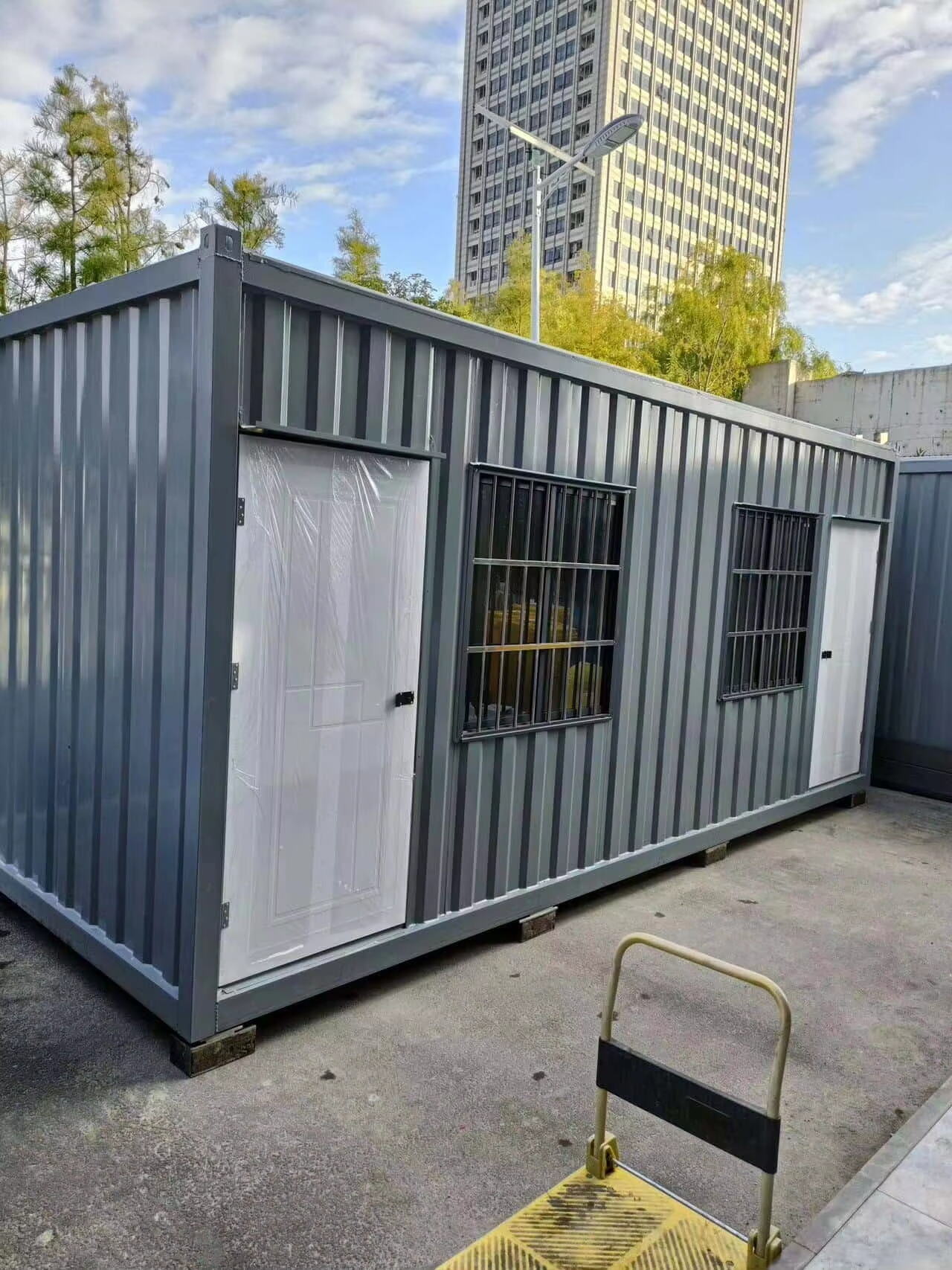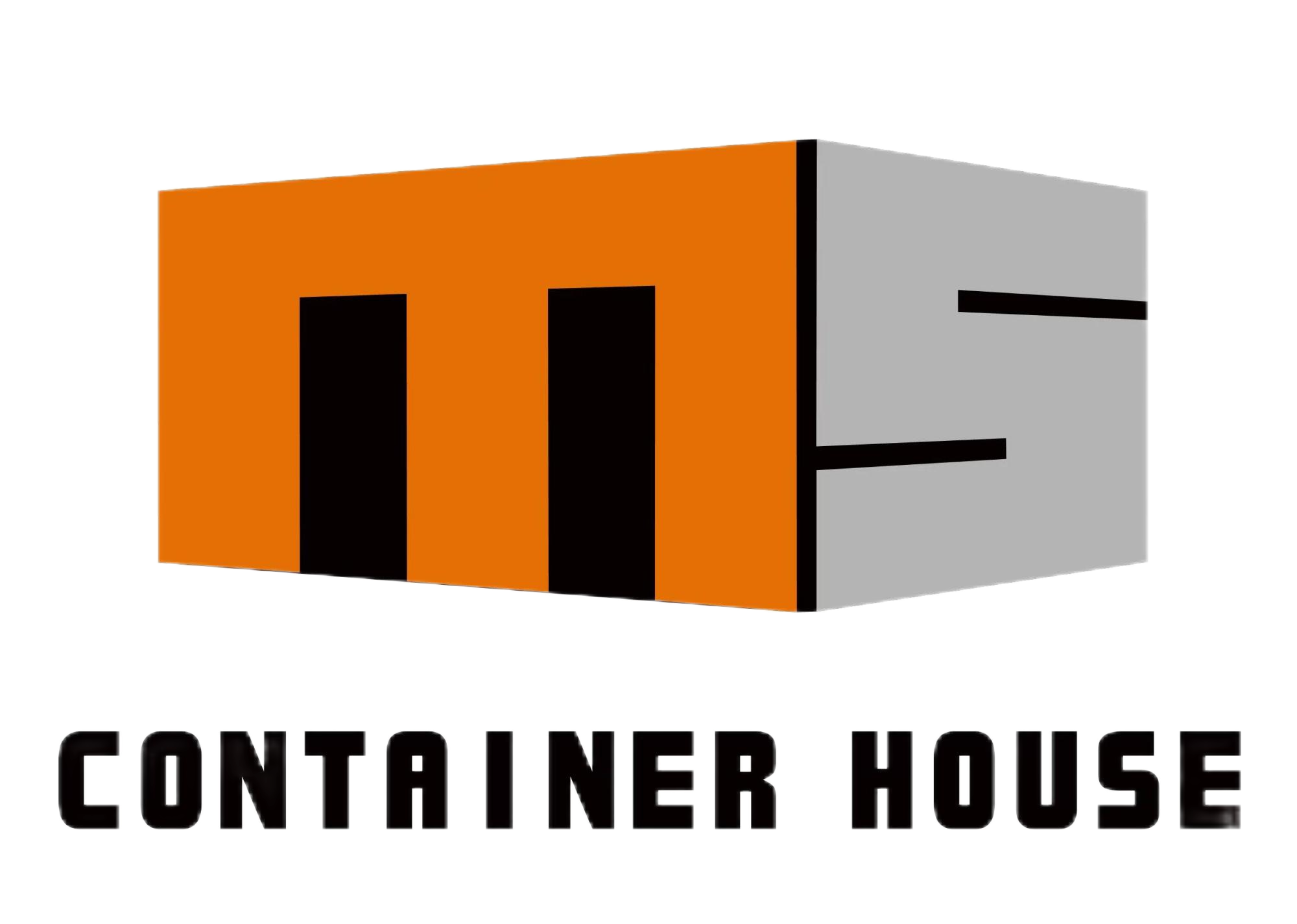מגמות מתפתחות בבתים ממוגנים עד 2025
שינוי לעבר תלבושות חשוכות ומוצגים נועזים
בתי ייצור מוקדם יעברו בשנת 2025 שינויים מעניינים במבנה החיצוני שלהם. חומרים כהים כמו פנלים ממתכת ועץ מעובד הם בטרנד כרגע, בגלל שהם פשוט נראים מודרניים, וגם מוסתרים אבק וגרטות טוב יותר מחלקים בהירים. בעלים של בתים אוהבים את המראה הזה, נקי ומעודכן, כי הוא נשמר טוב גם ללא מאמץ. אנחנו גם רואים בחוץ יותר ויותר עיצובים אמיצים בשנים האחרונות. אנשים רוצים שהבתים שלהם יתבלטו Crowd, אז אנחנו רואים כל מיני בחירות יצירתיות. סקרים מהשוק מראים שגם הדרישה למבנה ייחודי ומותאם אישית לא נעלמת בשום דרך. מומחים צופים שעוד ועוד אנשים ימשיכו לרצות שהבתים שלהם ייצגו משהו ולא יתמזגו עם הסביבה. ככל שיצרנים מאמצים את הטרנדים האלה, תעשיית הבנייה המוקדמת ממשיכה להרחיב את הגבולות של מה שמצופה בעיצוב בתים מודרניים.
מרחבים רב-משימתיים עבור אורח חיים מודרני
עם שינויי החיים שלנו לאחרונה, אנשים רוצים ששכונות מוגדלות יעשו יותר מכך שפשוט עומדות שם. יצרנים מתחילים לבנות בתים כאלו עם חדרים שניתן לשנות את מטרתם בהתאם לצורך של האדם ברגע מסוים. חישבו על שילוב של משרד בית עם חדר אורחים או איחוי של אזור המגורים עם אזור בידור, כולם באותו מקום. זה הגיוני כשכרגע כל כך הרבה אנשים עובדים מהבית וכשמשפחות משתנות כל הזמן מבחינת גודל והרכב. אדריכלים ומעצבים מדברים על כך כל הזמן, וטוענים שפתרונות תכנון חכמים הם בעלי חשיבות גדולה ביצירת בתים שצומחים יחד עם הצרכים שלנו. המטרה כולה נראית כמייצגת את הרצון להבטיח ששטחים יוכלו לשנות תפקיד בקלות, מבלי להרגיש צפופים או מבולבלים. חברות בנייה מוגדלת בהחלט מתחייבות לרעיון הזה, ומשנות את מה שאנחנו מצפים ממנו מהמרחבים בהם אנו חיים, כשמטרתן לענות על הצרכים השונים של כולנו בעולם המהיר של ימינו.
קיימות וחדשנות ירוקות
חומרים חומרים ירוקים ועיצובים חסכוניי אנרגיה
קיימות בתי manufacture מוגן הפכו למוקד עיקרי בתחום הדיור המוגן, ושינו את מה שמשתתף בבנייה ואת הביצועים של מבנים. רבים מהבתי manufacture המודרניים נבנים מהתכולה המורכבת מחומרים מחזוריים ועץ ממטעי עצים מנהלים בצורה אחראית, מה שמפחית את הפסולת שנוצרת ביצור. ההיבט הירוק ממשיך גם עם בחירות עיצוביות חכמות - בידוד טוב יותר שומר על הנוחות הפנימית מבלי לבזבז אנרגיה, ומכשור עם תיוג Energy Star מקטין את החשבונות החודשיים ובעצם הופך את החיים בתוך בתים אלו לנגישה ונעימה יותר. לפי הדוח של המועצה לבנייה ירוקה, שימוש בגישה ירוקה מסוג זה יכול להפחית את הוצאות האנרגיה בכ-30 אחוז, דבר שמשפיע משמעותית על תקציבי המשקאות לאורך זמן. לאנשים שמבחרים באפשרויות manufacture, חיסכון זה מאפשר לחיות בנוח בלי לשבור את הארנק, ובכל זאת תורמים לשמירה על כדור הארץ.
הקטנת א Craig פוטפרינטים עם בנייה מודולרית
שיטות בנייה מודולריות מציגות הזדמנות אמיתית לצמצום הפלט הפחמני של מבנים חדשים. כאשר חלקים של בתים מיוצרים במקשה אחר במקום באתר הבנייה, נוצרת פחות זבל בהשוואה לשיטות בנייה רגילות. גם התחום של תחבורה משתפר, שכן אין צורך בכמה כה רבות הלוך ושוב למשלוח חומרים או ציוד. כ правило, המפעלים שבהם מיוצרים המודולים פועלים על ידי מקורות אנרגיה נקיים יותר, ולכן הם מצמצמים זיהום תוך שמירה על שליטה מלאה באיכות. לבעלי בתים נותרות דירות עם טווח חיים ארוך יותר ובביצועים טובים יותר, מבלי לגרום לנזק סביבתי. בתי הייצור המוגדמים מדגימים כיצד נראית בנייה ברת קיימא כשעושים זאת נכון, ומעודדים העברה לעתיד ידידותי יותר לסביבה.

הרכבה של טכנולוגיה חכמה בבתים מוכנים
מערכות אוטומציה חכמות מונעות על ידי AI
אוטומציה ביתית שמנוהלת על ידי בינה מלאכותית שינתה את המשחק מבחינת ניהול צריכה וביטחון ב domiciles מוקדם. מערכות אלו לומדות מהתנהגות יומיומית של אנשים באמצעות זיהוי דפוסים ומעקב הרגלים, מה שמאפשר לחסוך באנרגיה מיותרת ולשמור על האבטחה. לדוגמה, טרמוסטטים חכמים מגלים מתי הבית ריק ומכבים את הטמפרטורה אוטומטית, וכך חוסכים בדמי חימום. אותו עיקרון תקף גם לגבי תאורה שנדלקת רק כשיש מישהו בחדר. כשמעצבי בתים מתחילים לשלב את כל המכשירים החכמים כבר בשלב התכנון של בתים מוקדמים, למשתני הבית נוצרת חווית חיים נוחה במיוחד – מרחב שפועלים בו בצורה עצמאית ללא צורך בפיקוח מתמיד. מה שאנחנו רואים כיום הוא רק תחילת הדרך של התחום, וכיצד בינה מלאכותית תמשיך להפוך את הגישה שלנו למרחבים ישים ויעילים.
פתרונות פתרונות לניהול אנרגיה
אינטרנט הדברים (IoT) מאפשר לבעלי בתים שליטה טובה בהרבה יותר בצריכת האנרגיה בבית, מה שמחזק את היכולת ליצור מרחבים מתקדמים לחיים שטובים גם לאנשים וגם לכדור הארץ. עם תכונות של מעקב וניהול בזמן אמת המשולבות במכשירים אלו, ניתן לראות בדיוק היכן הולך הכסף בכל הנוגע לעלות החשמל. מחקרים מסוימים מצביעים על כך שבתי חולים עלולים להחסין כ-20% על הוצאות החודשיות שלהם רק על ידי הכרה עם דפוסים אלו. הטכנולוגיה אכן עוזרת לצמצום של בזבוזי חשמל תוך שמירה על נוחות החיים במרחבים של בתים מפוצלים. אנו עדים לכך שבתי חכם מצוידים בטכנולוגיית IoT מובילים את הדרך בגישה חדשנית לניהול צורכי האנרגיה ב domiciles, וсоздים מרחבים שמחשבים מראש מבלי לעלות כסף נוסף על תכונות שאינן נחוצות.
קונספטים של עיצוב מודולרי וגמיש
יחידות ניתנות להרחבה עבור חייו סקלבי
למשפחות שגדלות עם הזמן, הדיור המודולרי מציג משהו מיוחד. בתים אלו, שנבנו בפונדקיות, נועדו תוך כדי התכנון להרחבה עתידית, כך שבעליהי בתים לא יצטרכו לפרק הכול כשהצרכים שלהם ישתנו. דמיינו את תחילת הדרך עם מבנה בסיסי שצומח יחד עם המשפחה. קירות ניתנים להזזה, רכיבים נוספים יכולים להיתקע כנדרש, יצירת מרחבים חדשים לחלוטין או אפילו הוספת קומה נוספת בהמשך. היכולת להתאים את מערכות אלו הופכת את הבתים לנוחים יותר עם ההתקדמות בגיל, ומאפשרת להם לעקוב אחרי כל מיני שינויים בסגנון חיים – מהכלה יחידנית ועד לישוב רב-דורתי.
ערכות פתוחים וסטייטיק אסתטיקה
עיצובים פתוחים הפכו לדי נפוצים ב domiciles מוגבהת בעשורים האחרונים, בעיקר בגלל שאנשים רוצים להרגיש שגרים במשהו גדול יותר מהריבועים הפיזיים שלהם. דירות עם תוכניות כאלה מאפשרות לאזורים השונים לשלב ביניהם בצורה טובה, כך ש_PATCH האור השמש יגיע גם פינות הרחוקות בבית ולא נוצרת תחושת בידוד של בני המשפחה בחדרים נפרדים. גישת המינימליזם אינה רק עניין של מראה - היא גם מקטינה משמעותית את כמות האשפה שמצטברת בכל מקום, מה שעושה את החיים היומיומיים נוחים יותר כשיש פחות פארקינג לנהל. רוב יצרני הבתים המוגבהת שואפים ליצור מרחבים שיעבדו גם מעשית וגם י bruh תחושת שלווה ונוחות שתאפשר מילוי מהרעש החיצוני. מה שעושה את הדגמים המוגבהת האלה ייחודיים הוא היכולת לשלב בין אזורים פתוחים לבין אלמנטים עיצוביים פשוטים, וכך לענות על הדרישה לחיים ברווחה גדולה יותר מבלי להגזים בצריכת חומרים ואנרגיה, מה שעונה בדיוק על הדרישה העכשווית לגישה מינמליסטית לעיצוב בתים.
אפשרויות הגדרה אישית והדפסה לפי בקשה
תצורות פנימיות מתאימות
התאמה אישית של בתים מוגמרים הצטיידו בדרכים רבות לאחרונה, עם עיצובים פנים שמתאימים באמת למה שאנשים רוצים במרחבים בהם הם חיים. בזמננו, רבים מהמתקנים של בתים מוגמרים כוללים תכונות כמו קירות שניתן להזיז אותם וריהוט שנבנה כך שיתאים לגודל החדרים השונים, כך שהתושבים יכולים לשנות את המראה של המרחב שלהם בקלות יחסית. חלק מהאנשים אוהב את הרעיונות של אזורים פתוחים גדולים בהם הם יכולים להזמין חברים למסיבות, בעוד אחרים אולי צריכים חדרים נפרדים למטרות פרטיות, והבתים המוגמרים המודרניים מטפלים בשני המצבים בצורה די טובה. היכולת לשנות את סדרי המגורים בהתאם לשינויים בחיים הופכת את הבתים האלה לבחירות מצוינות למשפחות צומחות או לאנשים שמחפשים גמישות. בסופו של דבר, הבנייה מוגמרת מציעה יותר מאשר רק זמן בנייה קצר, היא נותנת לאנשים שליטה אמיתית על התחושה והביצועים של הבית שלהם על פי הצרכים הייחודיים של כל אחד.
הextérieur מסור אחר וCladding
בעידן המודרני יכולים בעלי בתים להוסיף טעם אישי לדיור המוגזם שלהם באמצעות מגוון רחב של עיצובים וחומרי גמר שמחוץ שמתאימים לדימוי הרצוי של הבית. בעבר לא היו קיימות כל כך הרבה אפשרויות לבחירה. כיום קיימות אפשרויות רבות - מסיימים קלאסיים של עץ ואבן, דרך חומרי גלם מתכתיים ברקניים ועד חומרים מרוכבים שמוסיפים לבית מראה מודרני. בעזרת הבחירה הרחבה זו, ניתן ליצור בית שמתבלט מבחינה ויזואלית מבלי להתפשר על הסגנון הארכיטקטי האהוב. עיצוב מחדש של החוץ לא רק שמשפר את מראה הבית מהרחוב, אלא גם עוזר לשלב אותו בצורה טבעית בסביבה בה הוא ממוקם. חלק מהאנשים בוחרים את חומרי הבנייה גם בהתאם לתנאי האקלים המקומיים או לאופי השכונה.
אתגרים ופתרונות בבניית מראש
התגברות על מכשולים לוגיסטיים בתחבורה
הזזת חלקים היא אחת הבעיות המרכזיות בبناء פרה-פאבריקטי כשמדובר בחלקים גדולים ומוכנים מראש שנאלצים לנוע מהמפעלים השונים אל אתרי הבנייה. אף אחד לא רוצה שהלוחות היקרים שלו ייפגעו במהלך ההפצה, אך הפעולה כולה משפיעה על רווחים ועל ציון הזמן של הפרויקט. חברות רבות פונות לאמצעי תחבורה מיוחדים שמסוגלים להתמודד עם נפח החומרים שנדרש להובלה במקביל. שיטות חדשות אלו עוזרות לשמור על זרימה חלקה ולשמור על רכיבים יקרים מלהתפתל. חלק מהקבלנים אף משקיעים מעקב GPS על המשאיות שלהם כדי לדעת בדיוק היכן כל משלוח בכל רגע נתון. תכנון מושכל הוא ההבדל המכריע כאן, שכן עיכובים גורמים לתסבוכת בכל השרשרת, ומושפע לא רק פרויקט בודד אלא גם היכולת של סקטור הפרה-פאבריקציה להרחיב את היקף הפעילות שלו בצורה יעילה.
פתרון בעיות בידוד חום
שמירה על בידוד תרמי טוב נותרה חשובה עבור בתים טרומיים אם הם רוצים להישאר יעילים אנרגטית ולשמור על נוחות הציבור בפנים. שיטות הבידוד הישנות פשוט לא מספיקות עוד כשמדובר בעמידה בתקנים מודרניים עבור מבנים טרומיים. זו הסיבה שבונים רבים בוחנים כעת חומרים חדשים וגישות שונות שעובדות טוב יותר בפועל נגד אובדן חום. אנו רואים דברים כמו CLT מעץ למינציה צולבת בשימוש תכוף יותר, יחד עם מה שנקרא בטון קל משקל בעל חוזק גבוה LWHSC. שתי האפשרויות הללו מספקות בידוד טוב בהרבה מחומרים סטנדרטיים. כאשר חברות מתחילות להשתמש בחומרים משודרגים אלה בבנייני הטרומיים שלהן, הן בסופו של דבר עומדות ביעדי יעילות האנרגיה הללו תוך חוסכות כסף בחשבונות החימום לדיירים. עם הזמן, משמעות הדבר היא הוצאות חודשיות נמוכות יותר ובתים שמרגישים ידידותיים יותר לסביבה מבלי להתפשר על רמות הנוחות.
העתיד של דיור מוכן מראש: 2025 ואילך
הערכות צמיחה בשוק ואמצאות גלובלית
תחום הדיור המוגזם נמצא בעמדה צפונית לצמיחה משמעותית עד 2025, הודות לעלייה בביקוש לדירות שבני אדם יכולים להרשות לעצמם. דוחי תעשייה תומכים בפיזוי הזה באמצעות מספרים אמתיים שמראים על קבלת רוחב במדינות שונות. ערים כמו סן פרנסיסקו ולונדון, אשר מתמודדות עם משבר דיור חמור, הפכו לכוחות מניע עיקריים בתנועה הזו, כאשר הן רואות בדיור מוגזם פתרונות מעשיים לבעיות שלהן. מבנים מוגזמים חוסכים כסף, מקצרים את עיכובים בבנייה, ובעיקר מהירים יותר משיטות מסורתיות, מה שעושה אותם למשוך לבניינים וגם לתכנוני ערים. אנחנו מתחילים לראות כאן משהו די מעניין. מה שהיה פעם מוצר מיוחד הופך להיות זרם 메인 בחלקים רבים בעולם, ומשנה את הדרך בה אנחנו חושבים על בניה מגוררת.
תכנון עירוני והשתלבות ביתות מודולריים
יותר ויותר מנהלי ערים מתחילים להבין עד כמה בתי פארה קלים להרכבה יכולים לסייע בפתרון בעיות גדולות ביצירת קהילות בר קיימא. בנייה מוקדמת מתאימה כל כך כאשר מדובר בערים שצומחות במהירות ובאנשים הרבים שצריכים מקומות לגור. בתי פארה אלו מגיעים בגדלים ובסגנונות שונים, מה שאומר שאפשר להרחיב אותם יחד עם השכונות כאשר האוכלוסייה גדלה, תוך כדי שמירה על מטרות בנייה ירוקות. ערים שמאמצות פתרונות דיור מסוג זה נוטות גם להתמודד עם פרויקטים של הרחבה בצורה טובה יותר, מאחר שהן מקבלות דירות באיכות טובה תוך זמן קצר מבלי לשבור את ההבטחות האקולוגיות. אנחנו כבר רואים שינוי אמיתי במספר אזורי מטרופולין מרכזיים בהם בתי מודולריים הופכים להיות חלק מהנוף הרגיל במקום פתרונות זמניים.
שאלות נפוצות
מה הם הטרנדים העיקריים בעיצוב בתים מפבריקציה עבור 2025?
הטרנדים העיקים כוללים שינוי אל כיסויים כהים וחיצונים אמיצים, חללים רב-משימתיים, חדשנות סביבתית ותאום טכנולוגיה חכמה.
איך בתי קדימה הופכים להיות יותר ידידותיים לסביבה?
הם מאמצים חומרים ירוקים, תכנוני אנרגיה-יעילים ומערבים את ההשפעה הקארבית באמצעות טכניקות בנייה מודולרית.
איזה תפקיד הטכנולוגיה מילאת בבתים המודרניים של קדימה?
טכנולוגיהכנולוגיות כמו מערכות אוטומציה של בית מונע על ידי AI ופתרונותפתרונות פתרונות IoT עוזרות לנהל הצריכה של אנרגיה, לשפר אבטחה ולספק נוחות.
האם אפשר להתאים בתים מוקדמים?
כן, הבתים המודרניים של קדימה מציעים תצורות פנימיות מתאימות והשלמות חיצוניות מותאמות כדי להציג סגנונות אישיים.
מהי חלק מהאתגרים הקשורים לבניית קדימה?
האתגרים העיקריראשיים כוללים קשיי לוגיסטיקה בהובלה והסגר תרמי, שניהם מטופלים באמצעות פתרונות חדשניים.

